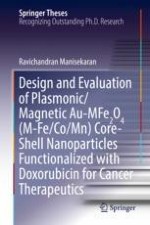2018 | OriginalPaper | Chapter
4. Designing a Nanocargo with Fe3O4@Au: A Tri-pronged Mechanism for MR Imaging, Synaphic Drug-Delivery, and Apoptosis Induction in Cancer Cells
Author : Ravichandran Manisekaran
Publisher: Springer International Publishing
Activate our intelligent search to find suitable subject content or patents.
Select sections of text to find matching patents with Artificial Intelligence. powered by
Select sections of text to find additional relevant content using AI-assisted search. powered by
